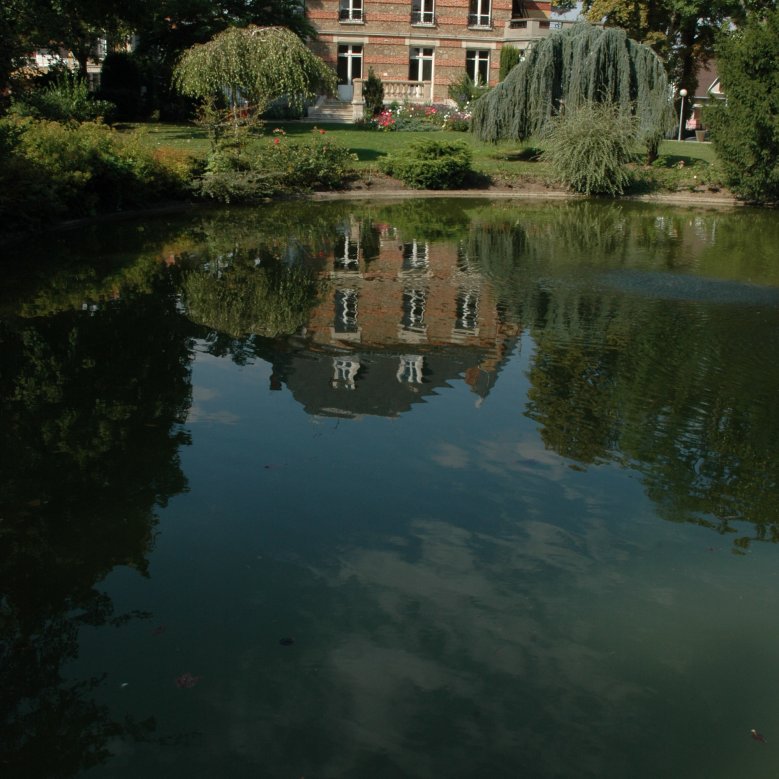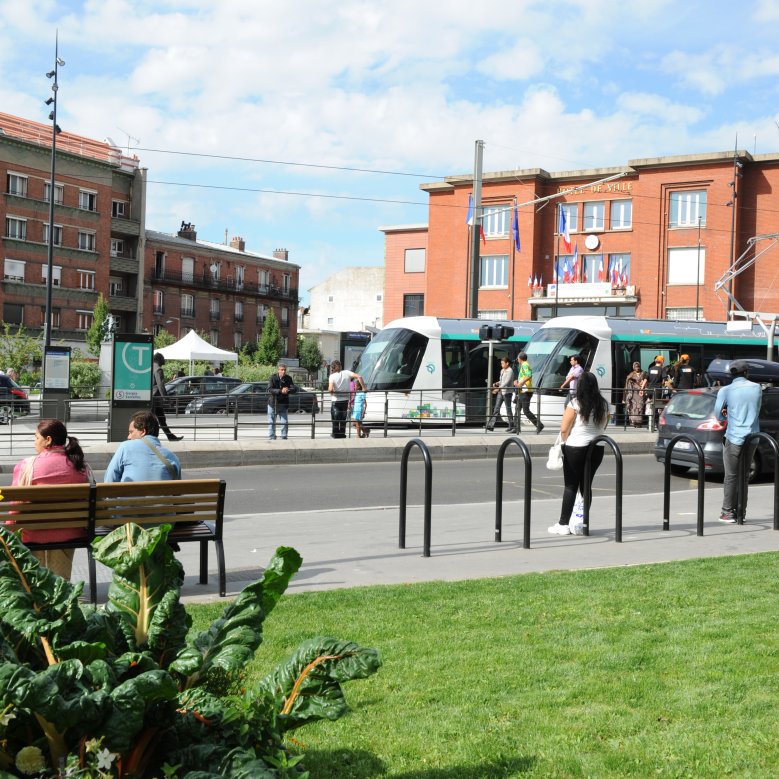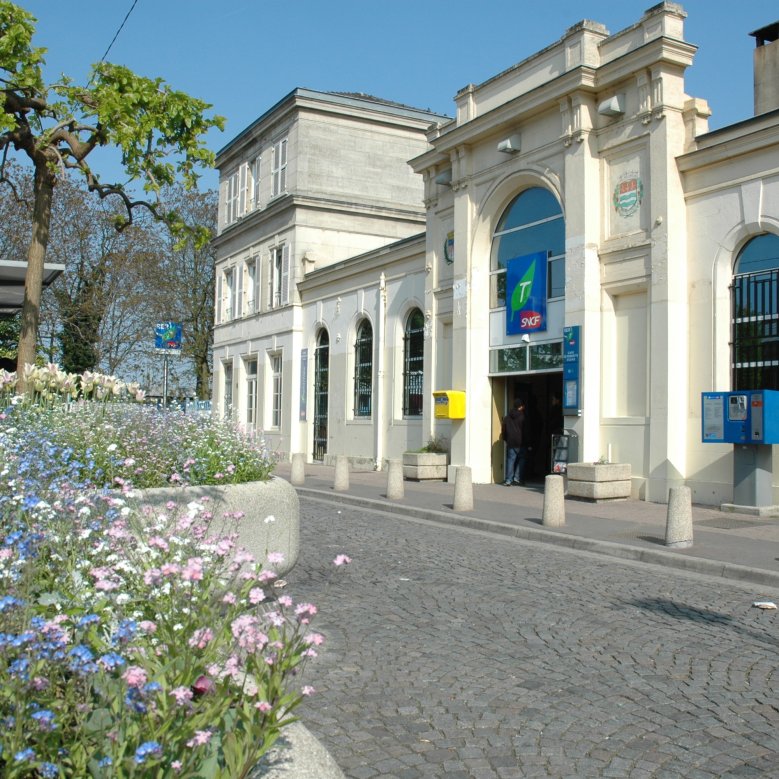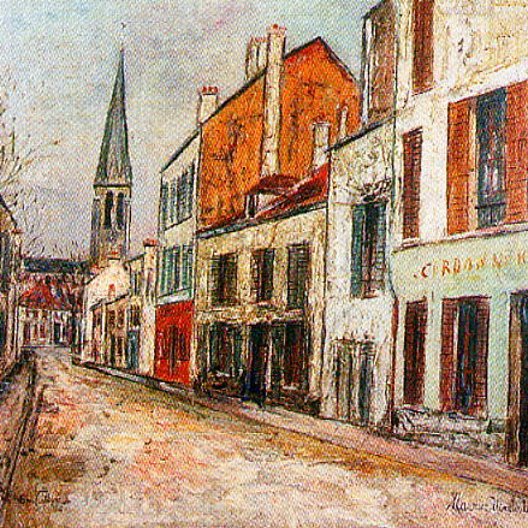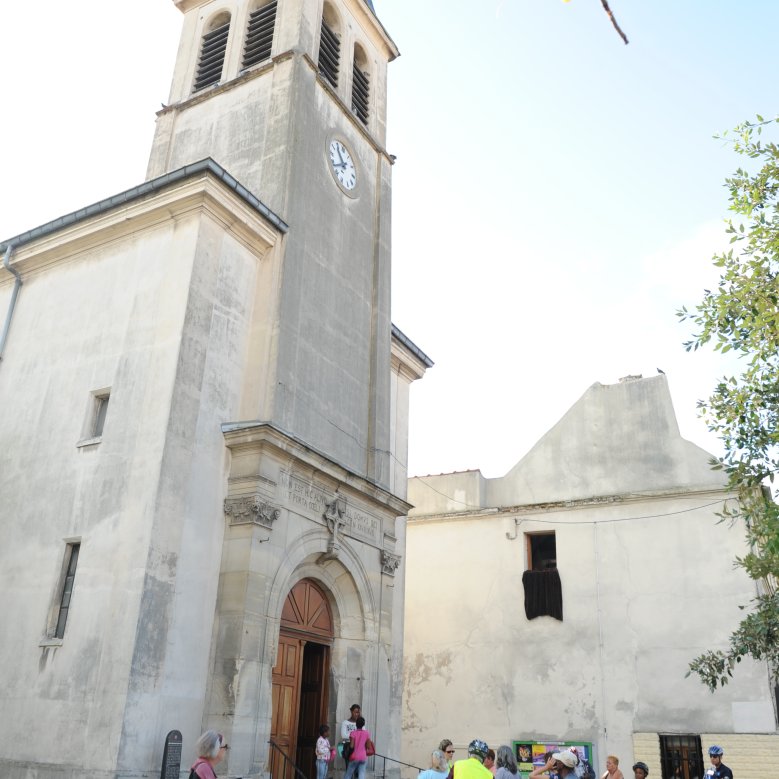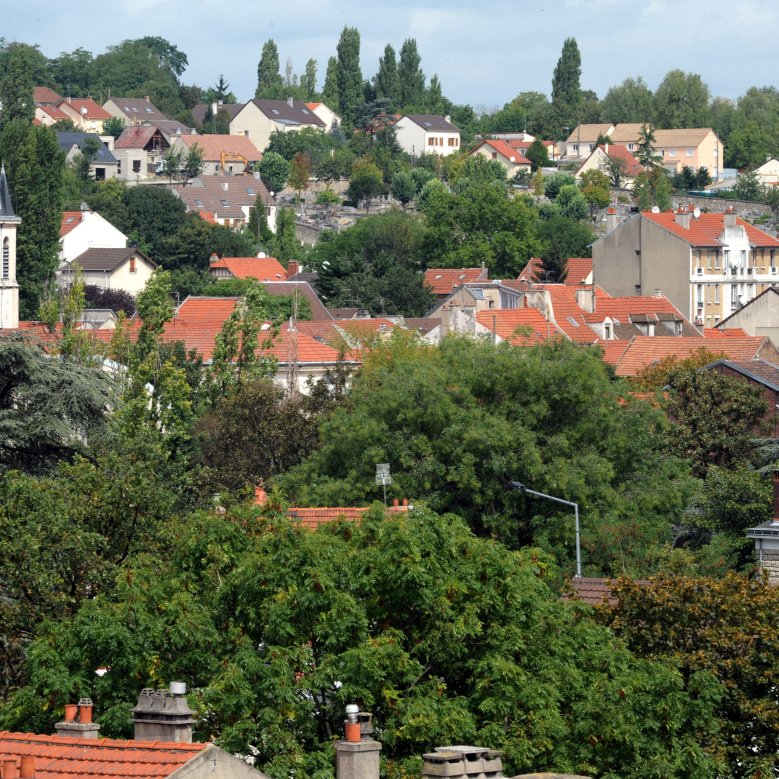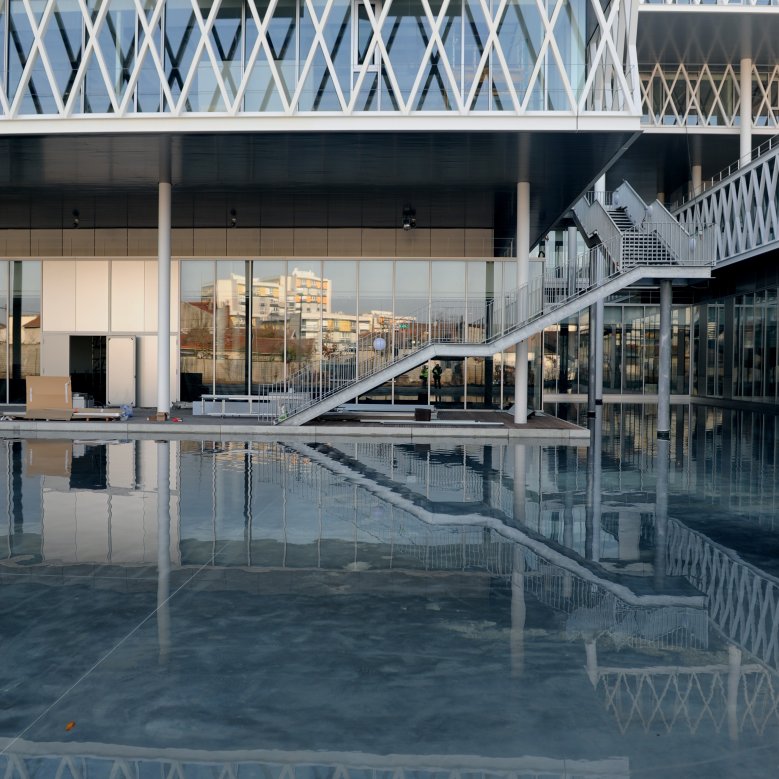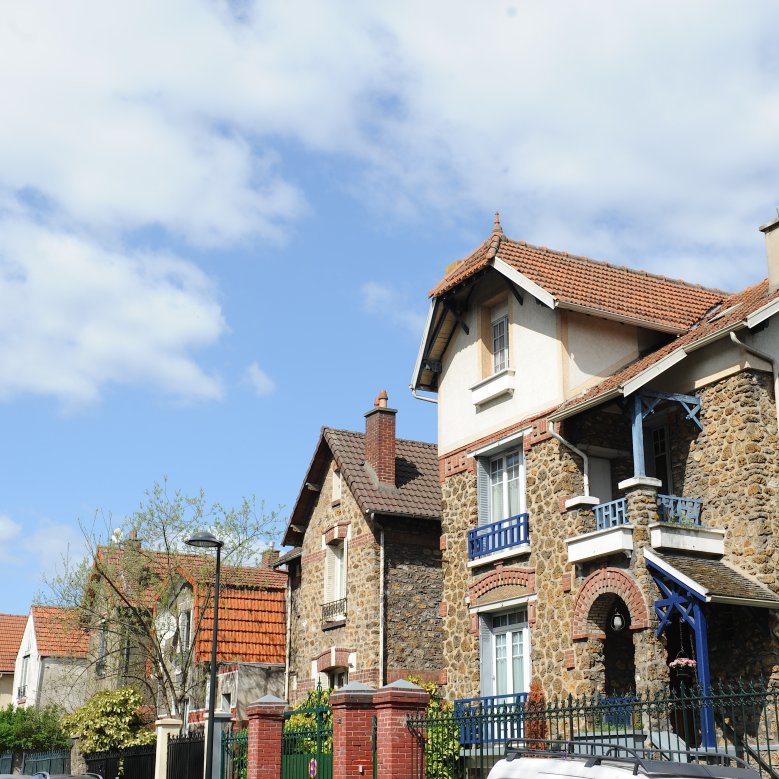United in peace - committed to peace
The municipality of Rüdersdorf near Berlin maintains a total of five town twinning partnerships and two town friendships. The oldest partnership, dating back to 1966, is with Pierrefitte-sur-Seine. At the beginning of the 1990s, most of the current districts established their own partnerships, which were taken over and continued by the municipality of Rüdersdorf bei Berlin.
In addition to the town twinning association of the municipality of Rüdersdorf near Berlin, various volunteers, clubs and fire brigades are still involved in the partnerships today.
The municipality of Rüdersdorf bei Berlin supports the activities between the towns and municipalities with the guideline for the promotion of town twinning.
Town twinning
Pierrefitte-sur-Seine

Population: 31,344
Area: 3.41 km²
Distance to Rüdersdorf near Berlin: 893 kmPierrefitte-sur-Seine is located to the north of Paris. You can reach the centre of the French capital in 10 minutes by metro. Pierrefitte derives its name from the Latin "Petra ficta" (solidified stone in the ground or menhir). The town of Pierrefitte sur Seine, land of vineyards, is a territory with a thousand-year history. In the 9th century, the town belonged to the royal abbey of Saint-Denis and was partially destroyed in the 15th century. In 1870, it was bombed and razed to the ground. Famous personalities such as the painter Maurice Utrillo lived in Pierrefitte. The town inspired the artist, who immortalised the vineyards, the church and the streets of Pierrefitte in his first works.
Five questions for Mayor Michel Fourcade:
How and when did the exchange between Rüdersdorf and Pierrefitte begin?
Our town twinning has existed since 1966 and has grown stronger and more vibrant year after year. Of course, the aims of this partnership have changed since the times of the GDR. But the friendship between our two towns is strong and we still have the will to strengthen our relations. We are certainly not short of ideas with our friends from Rüdersdorf. As a symbol, I am pleased that we have a street in Pierrefitte that bears the name Rüdersdorf and a lime tree that celebrates our friendship and was dedicated to an important member of the Rüdersdorf town twinning association, Jutta Neumann.
We have been organising exchanges with athletes for years. Badminton players from Rüdersdorf are due to come to Pierrefitte soon and our athletes will be taking part in the Stienitzsee Open as they often do. Cultural encounters also take place. In May, for example, Pierrefitte visited Rüdersdorf for a visit on the subject of ''Rüdersdorf yesterday, today and tomorrow''. We will borrow the photo exhibition ''Pierrefitte yesterday and today''. In the past, there were also several meetings with pupils, but such an exchange project has become more difficult - due to the differences between the two school calendars. And it's always a real pleasure when an official delegation from the municipality comes to visit us!
What should you definitely see when you come to Pierrefitte?
The town hall! It was built in 1938. An extension was built 12 years ago. We only speak a little German, but the welcome is warm.
Our church in the town centre was built at the end of the 19th century and is beautiful to look at. It was painted by the famous Maurice Utrillo at the beginning of the 20th century. He spent part of his youth in Pierrefitte. Unfortunately, the famous painting is now in a private collection in Australia.
The National Archives were opened in Pierrefitte in 2013. It is the largest collection of historical documents in Europe. It was built according to the plans of the Italian architect Massimiliano Fuksas. In France, the national archives store private documents and the documents of the central government bodies, with the exception of the Ministry of Defence, the Ministry of Foreign Affairs and the Ministry of the Economy, which have their own archives.
We also have many parks and green spaces with pretty houses from the mid-20th century. It used to be very fashionable to come to Pierrefitte in the countryside. We are 13 km from the centre of Paris (nowadays 20 minutes by suburban train).
What are the event highlights every year?
The Foulées pierrefittoises (our cross-country race) take place on Ascension Day. On the evening of 13 July, there is a big fireworks display and an evening of dancing in the fire brigade barracks to celebrate the bank holidays. We also have an evening in September where all the cultural events of the year are presented (performances, concerts, exhibitions...). We also celebrate many historical dates (related to the wars of the 20th century) to show how beautiful and good peace is for Europe. We are very happy to receive German delegations on these festive occasions.
When did you visit Rüdersdorf for the first time?
I visited Rüdersdorf for the first time in the spring of 1989 with the then mayor of Pierrefitte, Daniel Bioton. I myself was deputy mayor at the time. It was a few months before the Peaceful Revolution. I was delighted to be there when Mayor Sabine Löser invited a delegation to celebrate the 30th anniversary of the fall of the Berlin Wall.
What do you like about our community?
I really like the greenery, the woods, the trees and the water in the municipality. It's beautiful, very quiet and idyllic.
Impressions from Pierrefitte-sur-Seine
Santok

Population: 8,989
Area: 168 km²
Distance to Rüdersdorf near Berlin: 114 kmSantok is the youngest of the twin towns. The friendship between the municipality in Poland and Rüdersdorf near Berlin grew as part of an INTERREG project in which two joint harbour facilities were developed. In 2021, the decision was made to merge the many years of good and friendly cooperation into a town twinning partnership.
Five questions for Mayor Paweł Pisarek:
How and when did the partnership come about and what form does the exchange take?
The municipalities of Santok and Rüdersdorf near Berlin began working together in 2006, when the idea of inter-municipal cooperation to develop water tourism was born. Although the infrastructure project did not materialise, the first contacts between Santok and Rüdersdorf bei Berlin were established at the time. In spring 2015, together with the then mayor of the municipality of Santok, we decided to "revive" this project, which had already been forgotten by many. As a result of the "We connect rivers II" project, a modern marina was built in Santok and a sports boat mooring in Rüdersdorf. Cooperation between the two municipalities continues: representatives from both municipalities jointly promote their tourism offerings at trade fairs (in Szczecin and Poznań) and at events. We also want to involve the younger generations, e.g. through an exchange programme for schoolchildren.
What should you definitely see when you come to Santok?
The municipality of Santok has a very wide range of tourist attractions. It is an excellent place for active recreation with well-marked hiking, cycling and water trails. The history of the municipality of Santok dates back to the early Middle Ages. The famous chronicler Gall Anonim called Santok the "watchtower and key to the kingdom" in the 10th century. When visiting Santok, you should plan a detour to the Santok Castle Museum and the medieval castle site. There is also a 2 km long nature trail. During your stay in Santok, it is worth climbing the tower hill on the right bank of the village, from where you can admire the panorama of the municipality.
What are the event highlights every year?
The most important event for us is the historic castle festival. It always takes place in the middle of June. The inhabitants of the municipality of Rüdersdorf near Berlin are cordially invited to attend. A historical parade is planned as well as a medieval village on the promenade of Santok, where amber workers, leather workers, weavers and wood carvers will set up their workshops. There will also be a night tour of the castle, concerts, medieval dance workshops and a re-enactment of the Battle of Santok. For many years we have been organising a run for health - "Janczewska Dziesiątka". Around 200 runners and Nordic walking enthusiasts take part every year. In addition, the rural municipality of Santok organises an annual harvest festival in the local districts with the ritual of dividing bread and handing over the grain for the new sowing season, performances by local artists, concerts and competitions.
When was the first time you visited the municipality of Rüdersdorf near Berlin?
I visited Rüdersdorf near Berlin for the first time in spring 2015. At that time, I was secretary (administrative director) of the municipality of Santok and was responsible for the partnership relations between the towns and municipalities, among other things.
What do you associate with our community, what do you particularly like?
One of my main associations with the town is the museum park, which combines tradition and modernity. The mining roots and the opportunity to explore the open-cast mine - which is still in operation - in a very interesting way (on foot or by off-road vehicle). Discovering what this place has been hiding for millions of years is extremely fascinating.
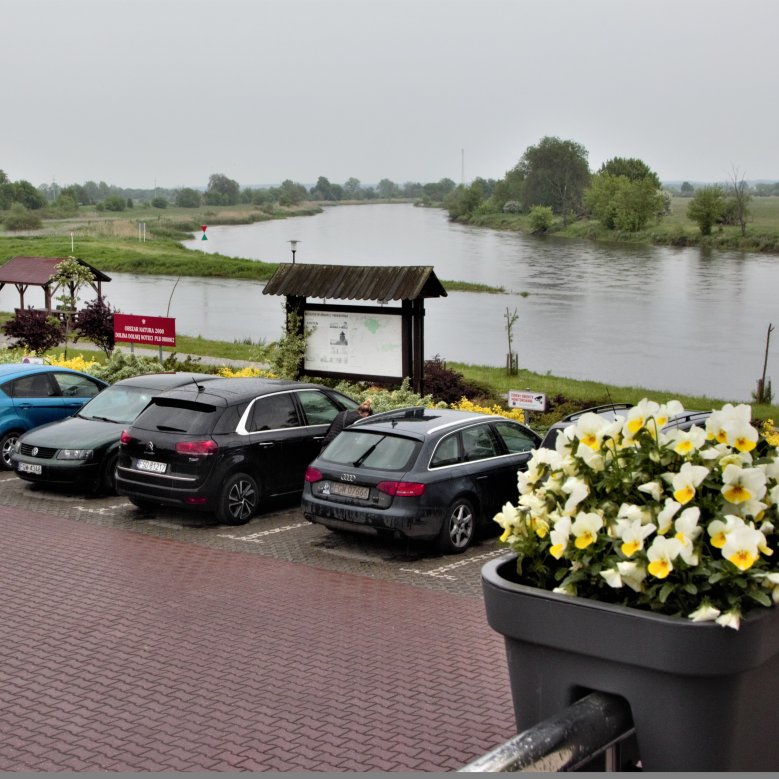 © Michael Kunze - Photo group Rüdersdorf
© Michael Kunze - Photo group Rüdersdorf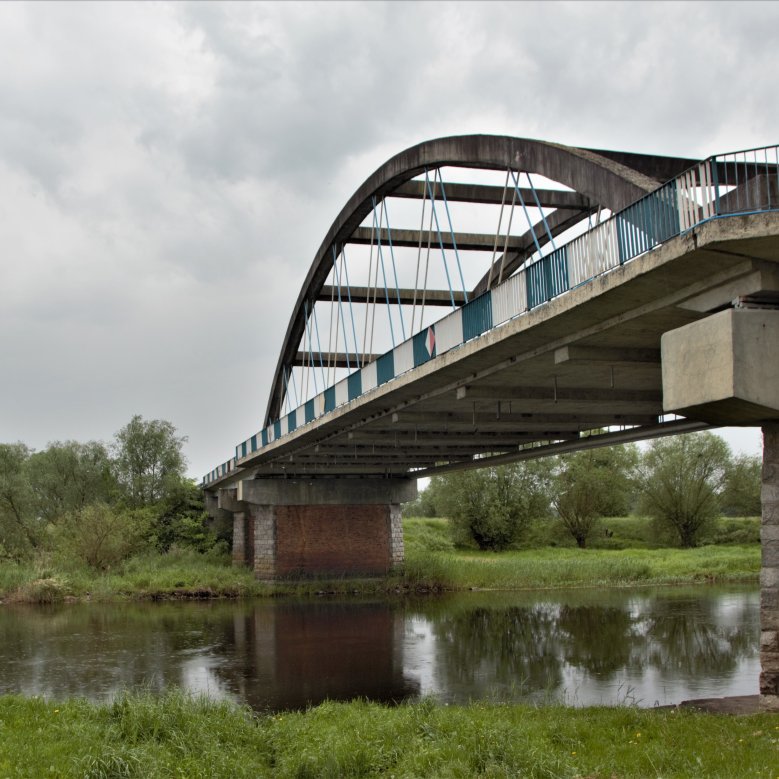 © Michael Kunze - Photo group Rüdersdorf
© Michael Kunze - Photo group Rüdersdorf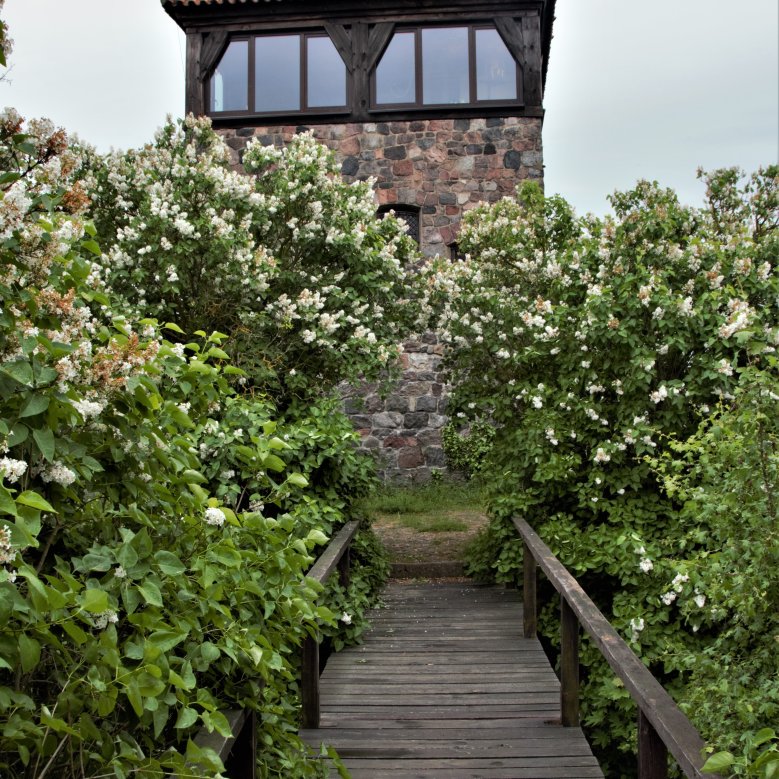 © Michael Kunze - Photo group Rüdersdorf
© Michael Kunze - Photo group Rüdersdorf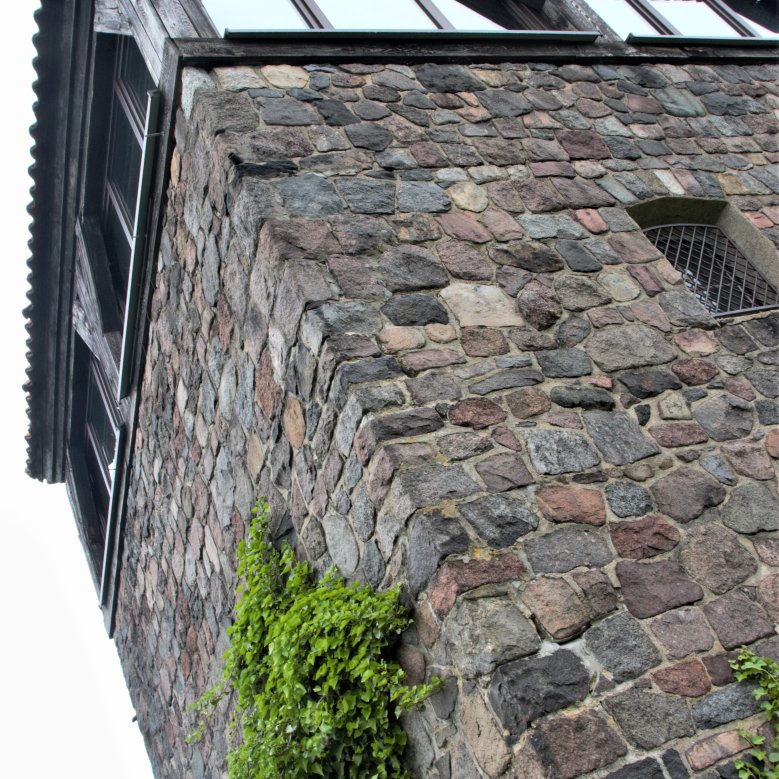 © Michael Kunze - Photo group Rüdersdorf
© Michael Kunze - Photo group Rüdersdorf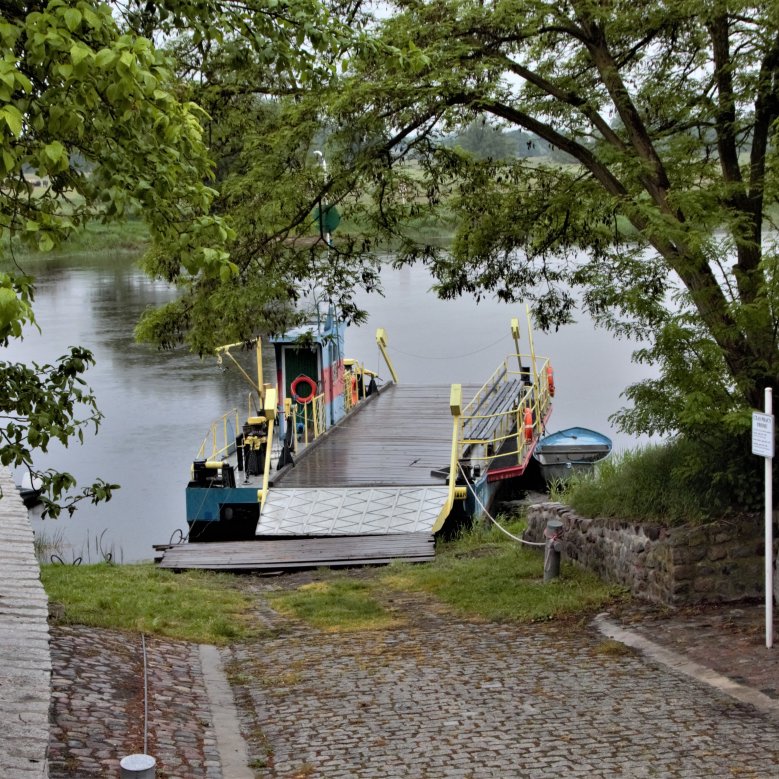 © Michael Kunze - Photo group Rüdersdorf
© Michael Kunze - Photo group Rüdersdorf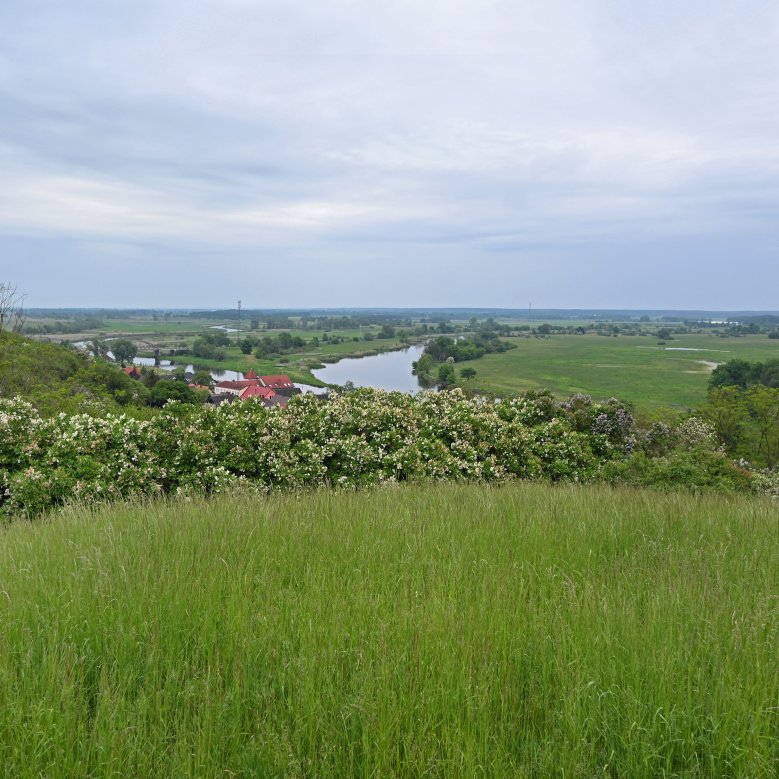 © Armin Roth - Rüdersdorf photo group
© Armin Roth - Rüdersdorf photo group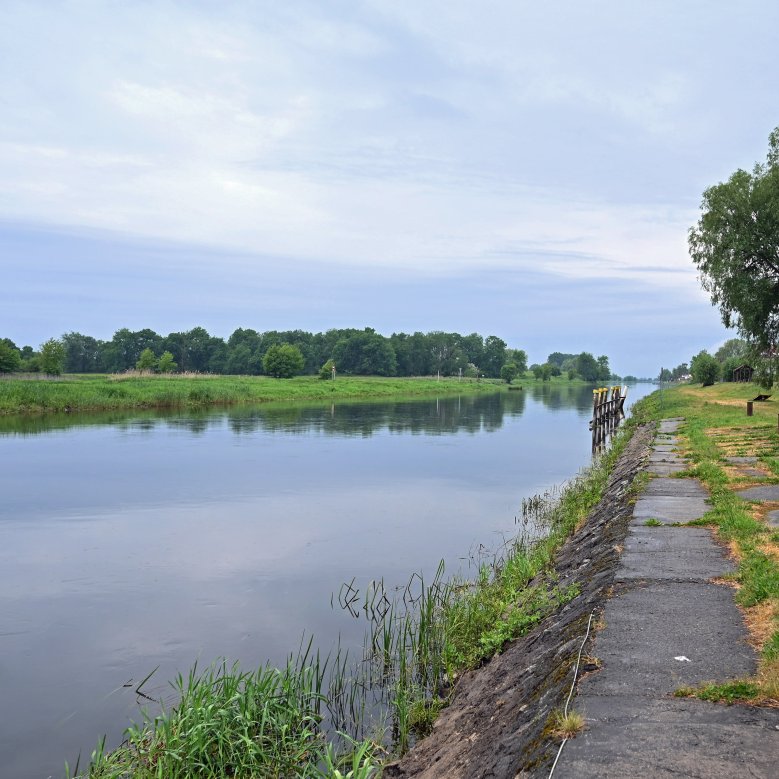 © Armin Roth - Rüdersdorf photo group
© Armin Roth - Rüdersdorf photo group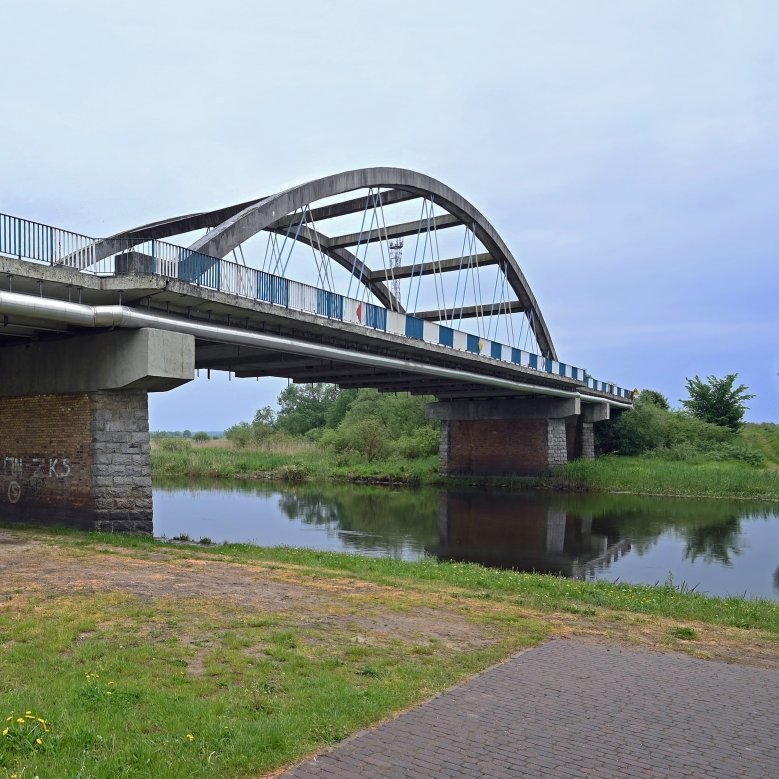 © Armin Roth - Rüdersdorf photo group
© Armin Roth - Rüdersdorf photo group
Hemmoor

Population: 8,879
Area: 45 km²
Distance to Rüdersdorf near Berlin: 337 kmHemmoor is a town with around 8,300 inhabitants on an area of 45 square kilometres and is located between Cuxhaven and Stade in Lower Saxony. It emerged from six independent municipalities. We are connected to Hemmoor through mining. Hemmoor is internationally renowned for its chalk lake, where apnoea diving competitions are regularly held. The shooting club, trade association, fire brigade and cultural centre are important partners for the exchange with Hemmoor.
Five questions for joint municipality mayor Jan Tiedemann:
How and when did the partnership come about and what form does the exchange take?
The partnership arose from the shared history of cement production and was sealed on 31 May 1991. There is a lively exchange between the business communities and mutual visits to important events.
What should you definitely see when you come to Hemmoor?
At the German Cement Museum Hemmoor, you can experience the history of what was once the largest industrial company in the northern Elbe-Weser triangle up close. The barge "Hemmoor 3" is the highlight of the museum. On the site of the former cement factory, the "Cement Experience Trail" has been created as an exciting themed trail for young and old, pedestrians and cyclists.
The 60 metre deep chalk lake is known to divers far beyond Germany's borders. It is the former chalk pit of the cement works, which filled up with crystal-clear spring water within six years of the end of cement production.
The Osten-Hemmoor transporter bridge is one of the last eight transporter bridges in the world and a towering landmark of the Osteland region. The "FährStuv" provides visitors with extensive information about the technical monument. You will also find interesting facts about the town of Osten, the history of the Oste and the eight ferries in operation worldwide.
What are the event highlights every year?
These include the spring market on the first weekend in April, the autumn market on the last weekend in October and the Christmas market on the first weekend in Advent, all on the town hall square. In June, July and August there is a baking festival in the Kulturdiele, and in November there is a pre-Christmas arts and crafts market. Occasionally there are open-air concerts on the town hall square or in the Kulturdiele. In addition, numerous folk and shooting festivals in the town of Hemmoor invite you to linger and socialise with our open-minded locals.
Have you been to Rüdersdorf bei Berlin yourself?
No. Unfortunately, I haven't had the opportunity yet. Although I could definitely see a personal connection through rowing.
What do you associate with our community, what do you particularly like?
The connection lies in the history of cement production, which originally also took place in Hemmoor. The "Hemmoor Zement AG" is already a thing of the past, but Rüdersdorf still produces cement today in a modern plant and is known for its limestone deposits. Particularly noteworthy is the exhibition on mining/open-cast mining and limestone extraction in the Rüdersdorf Museum Park, which provides an informative and interesting insight into the history. The municipality also offers many attractions for nature lovers with its numerous hiking trails and lakes.
Impressions from Hemmoor
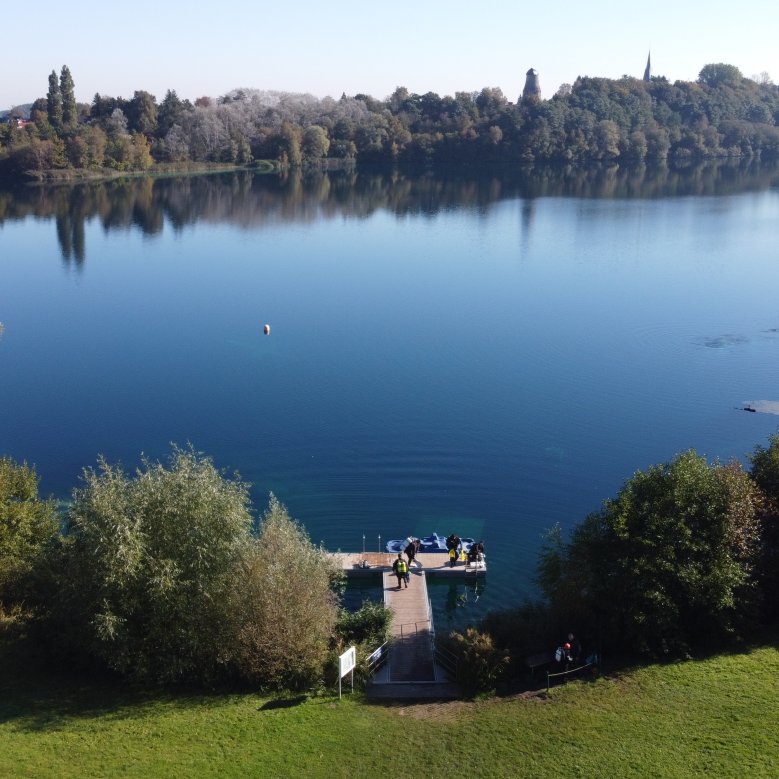
 © (c)floriantrykowski.de
© (c)floriantrykowski.de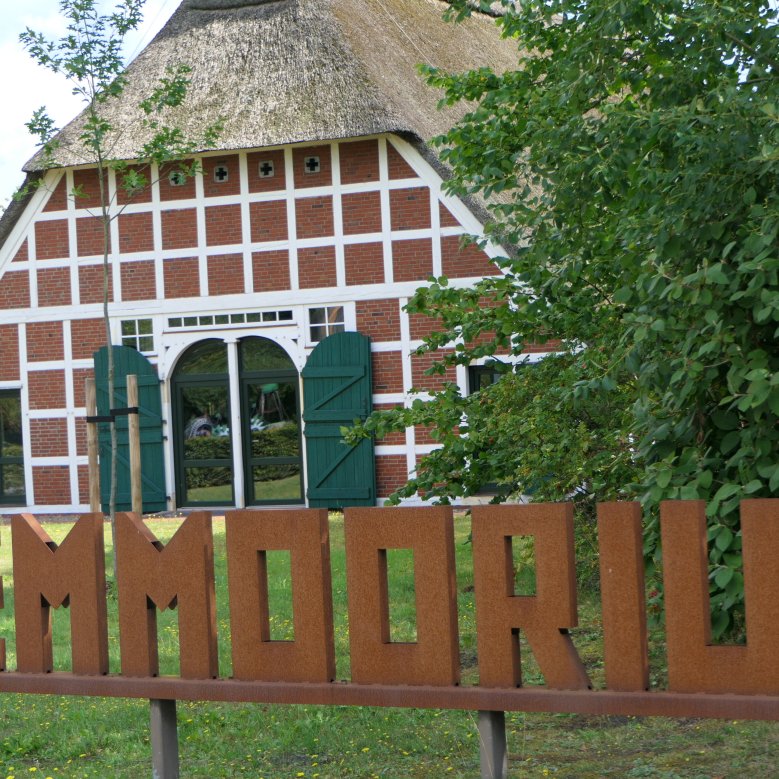
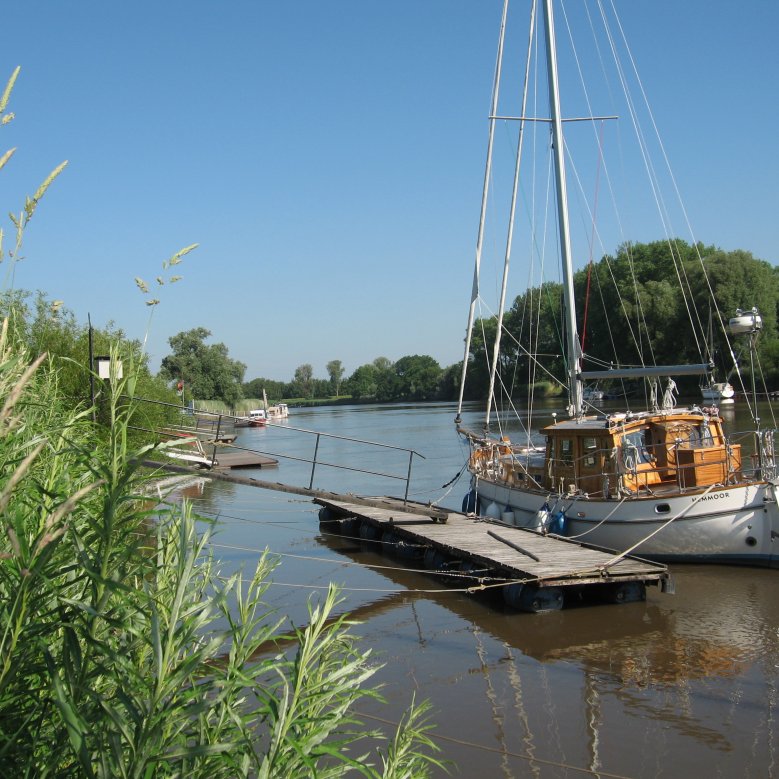

Neuburg on the Rhine

The municipality of Neuburg am Rhein is the twin town of the Hennickendorf district. It is located at the south-easternmost corner of Rhineland-Palatinate, between the Rhine and Lauter rivers near Rheinstetten and is home to 2,518 inhabitants. The nearest towns are Neuburgweier and Karlsruhe. Historically, Neuburg am Rhein was originally a shipping and fishing village, a customs point for medieval trade and a gold panning centre. The speciality of the municipality lies in its change of location at the end of the 16th century. At this time, it moved from the right to the left bank of the Rhine due to flooding. The modern townscape is characterised by well-preserved half-timbered houses. Contact with the municipality of Neuburg am Rhein is maintained and constantly refreshed through occasional visits.
Schwegenheim

The district of Herzfelde is twinned with Schwegenheim. The twin town belongs to the district of Germersheim and is part of the municipality of Lingenfeld. It has a population of 3,091 and is located in the Rhine plain in the Palatinate Forest near the town of Speyer am Rhein. The area offers many opportunities for hiking, cycling and other sports.
City friendships
Lomma

Lomma is a municipality north of Malmö with around 20,000 inhabitants. Still called Lumaby in 1085, it is a waterside town in the southern Swedish province of Skåne län and the historic province of Skåne. It was once a hub for trade by sea, a cement factory was built here in 1872, and it has always been and still is known for clay mining and is an ideal holiday destination.
There is a good view of Copenhagen from the sandy beach. Popular tourist destinations include the pier, the campsite and the mini golf course.
In 2008, a school exchange took place between Lomma and Rüdersdorf near Berlin, in which 20 girls and boys from Rüdersdorf schools travelled to the Swedish twin town to gain experience, learn or improve their English and Swedish and cultivate cultural exchange.
Popielów

Popielów is a 175.57 km² commune in Poland in the Opolskie Voivodeship, in the western district of Opole, about 55 km from Wrocław. It is made up of the 12 parishes of Popielów, Stare Siołkowice, Karłowice, Strobrawa, Nowe Siołkowice, Kurznie, Lubienia, Kaniów, Rybna, Stare Kolnie, Popielowska Kolnia and Kuźnica Katowska.
The municipality has few but well-preserved monuments and historical buildings to offer for excursions, but is all the more famous for its extensive natural landscape and the nature park, which covers half the area of Popielów.

